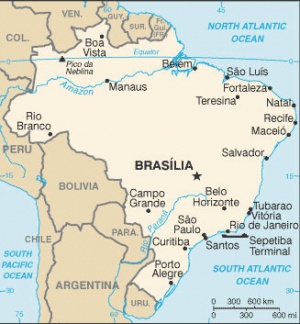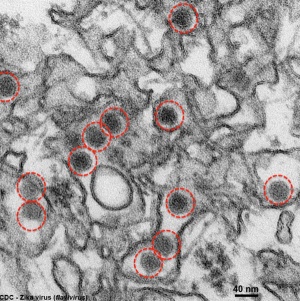Brazil Statistics
| Embryology - 28 Apr 2024 |
|---|
| Google Translate - select your language from the list shown below (this will open a new external page) |
|
العربية | català | 中文 | 中國傳統的 | français | Deutsche | עִברִית | हिंदी | bahasa Indonesia | italiano | 日本語 | 한국어 | မြန်မာ | Pilipino | Polskie | português | ਪੰਜਾਬੀ ਦੇ | Română | русский | Español | Swahili | Svensk | ไทย | Türkçe | اردو | ייִדיש | Tiếng Việt These external translations are automated and may not be accurate. (More? About Translations) |
Introduction
This page links to the current online resources available to explore Brazilian population and birth data.
Recent infections with Zika virus have been thought to be associated with an increase in the number of cases of microcephaly in Brazil.[1]
| Statistics Links: Introduction | Reports | World Population | World Fertility | World Infant Mortality | Maternal Mortality | Australia | Brazil | Canada | China | Germany | India | Indonesia | Europe | Myanmar | Netherlands | Spain | United Kingdom | Romania | Uganda | United States | BGD Tutorial - Applied Embryology and Teratology | National Perinatal Statistics Unit | AIHW | Category:Statistics | |
|
Some Recent Findings
|
| More recent papers |
|---|
|
This table allows an automated computer search of the external PubMed database using the listed "Search term" text link.
More? References | Discussion Page | Journal Searches | 2019 References | 2020 References Search term: Brazil Embryology Statistics |
| Older papers |
|---|
| These papers originally appeared in the Some Recent Findings table, but as that list grew in length have now been shuffled down to this collapsible table.
See also the Discussion Page for other references listed by year and References on this current page.
|
Nutrition
- 8% of infants with low birthweight, 2005-2009
- 96% of households consuming iodized salt, 2003-2009
General Statistics
Population 203,429,773 (July 2011 est.) country comparison to the world: 5
Age structure
0-14 years: 26.2% (male 27,219,651/female 26,180,040) 15-64 years: 67% (male 67,524,642/female 68,809,357) 65 years and over: 6.7% (male 5,796,433/female 7,899,650) (2011 est.)
Median age
total: 29.3 years male: 28.5 years female: 30.1 years (2011 est.
Population growth rate
1.134% (2011 est.) country comparison to the world: 104
Birth rate
17.79 births/1,000 population (2011 est.) country comparison to the world: 109
Death rate
6.36 deaths/1,000 population (July 2011 est.) country comparison to the world: 152
Sex ratio
at birth: 1.05 male(s)/female under 15 years: 1.04 male(s)/female 15-64 years: 0.98 male(s)/female 65 years and over: 0.73 male(s)/female total population: 0.98 male(s)/female (2011 est.)
Infant mortality rate
total: 21.17 deaths/1,000 live births country comparison to the world: 93 male: 24.63 deaths/1,000 live births female: 17.53 deaths/1,000 live births (2011 est.)
Life expectancy at birth
total population: 72.53 years country comparison to the world: 124 male: 68.97 years female: 76.27 years (2011 est.)
Total fertility rate
2.18 children born/woman (2011 est.) country comparison to the world: 109
Data: The World Factbook Brazil
Ayahuasca

|
Ayahuasca (AYA, iowaska, yagé) is a psychoactive substance made by South American natives from of Banisteriopsis caapi vine and other ingredients. A recent study in rats[3] at a range of ayahuasca concentrations, corresponding from 1x to 8x the human dosage, demonstrated a number of fetotoxic effects:
|
Coronary Heart Disease
Paediatric and congenital heart disease in South America: an overview.[5]
- Ventricular septal defects - Surgical mortality with repair in infancy, mainly in the muscular septum, probably slightly higher in South America than in North America and Europe.
- Secundum atrial septal defects - trans-catheter closure is the preferred method of treating most patients.
- Pulmonary valve stenosis and atresia with intact ventricular septum - balloon pulmonary valvuloplasty for PVS.
- Aortic stenosis - balloon valvuloplasty.
- Coarctation of the aorta - children balloon angioplasty, adolescents and adults a trend towards the use of bare and covered stents.
- Tetralogy of Fallot - patients with severe hypoxaemia have a modified Blalock–Taussig shunt.
References
- ↑ Torjesen I. (2016). Zika virus outbreaks prompt warnings to pregnant women. BMJ , 352, i500. PMID: 26813766
- ↑ Carlos BC, Rona LDP, Christophides GK & Souza-Neto JA. (2019). A comprehensive analysis of malaria transmission in Brazil. Pathog Glob Health , 113, 1-13. PMID: 30829565 DOI.
- ↑ 3.0 3.1 da Motta LG, de Morais JA, Tavares ACAM, Vianna LMS, Mortari MR, Amorim RFB, Carvalho RR, Paumgartten FJR, Pic-Taylor A & Caldas ED. (2018). Maternal and developmental toxicity of the hallucinogenic plant-based beverage ayahuasca in rats. Reprod. Toxicol. , , . PMID: 29522798 DOI.
- ↑ Mirlesse V & Ville I. (2013). The uses of ultrasonography in relation to foetal malformations in Rio de Janeiro, Brazil. Soc Sci Med , 87, 168-75. PMID: 23631792 DOI.
- ↑ Pedra CA, Haddad J, Pedra SF, Peirone A, Pilla CB & Marin-Neto JA. (2009). Paediatric and congenital heart disease in South America: an overview. Heart , 95, 1385-92. PMID: 19174420 DOI.
External Links
External Links Notice - The dynamic nature of the internet may mean that some of these listed links may no longer function. If the link no longer works search the web with the link text or name. Links to any external commercial sites are provided for information purposes only and should never be considered an endorsement. UNSW Embryology is provided as an educational resource with no clinical information or commercial affiliation.
- Brazilian Government IBGE - Brazilian Institute of Geography and Statistics | Infant Mortality in Brazil
- UNICEF Brazil
- The World Factbook Brazil
Glossary Links
- Glossary: A | B | C | D | E | F | G | H | I | J | K | L | M | N | O | P | Q | R | S | T | U | V | W | X | Y | Z | Numbers | Symbols | Term Link
Cite this page: Hill, M.A. (2024, April 28) Embryology Brazil Statistics. Retrieved from https://embryology.med.unsw.edu.au/embryology/index.php/Brazil_Statistics
- © Dr Mark Hill 2024, UNSW Embryology ISBN: 978 0 7334 2609 4 - UNSW CRICOS Provider Code No. 00098G


